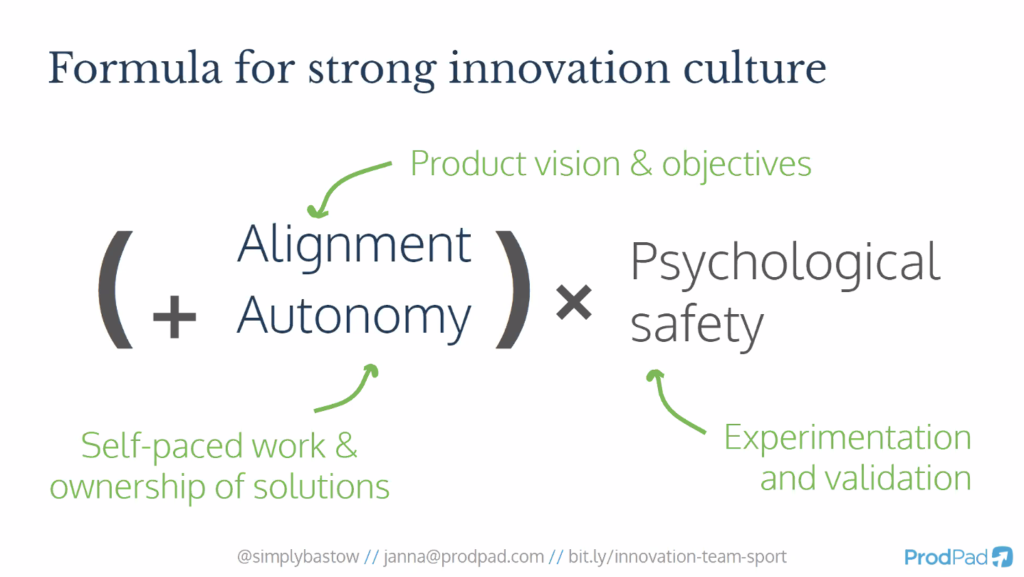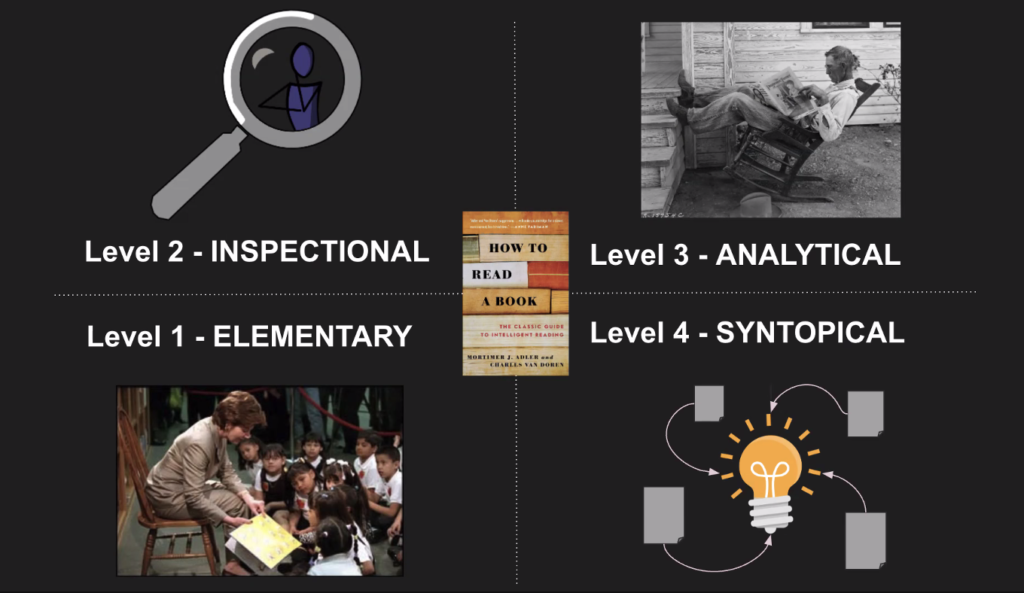I spent two days at the Lean Agile Exchange conference, and absolutely loved it. Every session I went to was gold, and I’m sure I missed some other excellent ones due to clashes (luckily, I can watch the videos on catch up over the next few weeks).
Some particular highlights for me:
Innovation is a team sport, with Janna Bastow
Lots of excellent ideas all tied together by an overall formula, which Janna described as “far from scientific, but it’s something like this”:

On alignment and autonomy:
- Agree a product vision with your team, and agree objectives to move you towards it.
- OKRs used well are one good format. Get really simple and clear, and let people suggest what they can contribute.
- This is vastly different than management setting goals and tasks and micromanaging the process – you’ve built an army of knowledge workers, let them use their knowledge.
On psychological safety:
- Avoid feeling you need to know everything, feeling you need to be right.
- “How might we” invites contributions
- “I bet” takes away the personal investment in being right
The slides, and lots more notes from the session, are at bit.ly/innovation-team-sport
Creating shared mental models through book clubs, with Magdalena Björkman
A really interesting pitch for book clubs: use them to stop talking in circles and to cause action, use them when things are urgent.
Magdalena talked through 3 different stories of when her leadership team was stuck and struggling to make progress, and how books drove them to move forwards. They didn’t wait to finish whole books – get to the first interesting concept, try it out together on an example, see if you can put it to use on the real challenge you’re trying to solve. I love this idea.

We got to try out small exercises from some of the books they’ve enjoyed (Thinking in Systems, Team Topologies, and 7 Rules for Positive, Productive Change), and the session ended with a passionate plea: Make space to bring in ideas from outside, share with each other, and put them to good use. Be a book club.
Facilitation guides for several books they used, and Miro templates for using activities from the books, are at https://www.viktorcessan.com/book-club-facilitation-guides/
Increase your throughput of books to 50+ a year! with Noel Warnell
A perfect follow-up to that book club idea – how to quickly confirm which of many interesting-looking books is worth diving into properly!
Noel introduced us to different “levels” of reading a book, using idea from “How to read a book”. We’re taught level 1 at school – start at page 1 and read every page completely till the end. That’s how most of us read all books, but it’s not the only option.

- Level 2: limited time, get what you can
- Level 3: if time was no object and you can dive and reflect deeply
- Level 4: “advanced stuff”, things like reading multiple books in parallel, and making your own conclusions that maybe aren’t in any of them.
We’d each brought a non-fiction book to the session, and used various skimming techniques to understand the key ideas in it (looking at the conclusion, chapter summaries, other areas). In 20 minutes I got a really good sense of what was in the book I’d picked (the agile comms handbook), using the “4P”model:
- Preview: scanning for signals. What are the key points the author is trying to make? Summaries and intros in chapters are great, the author’s helping you.
- Predict: where are the bits that’ll be most relevant and useful for me, right now?
- Prior knowledge: you might notice things that are familiar, you can skip past those.
- Purpose: by the end of this scan through, decide if this book is going to give you what you’re hoping for.
This should be enough for you to decide whether:
- you’ve got what you needed from this book and can stop
- you’re not going to get what you hoped for and can stop
- you’re willing to invest more time in thorough reading
Agile comms book was a strong 3 for me!
This technique is a great timeboxed way to see what relevant and useful ideas you could take right away, and ties in nicely to the book club idea above. Use this technique to select from your huge pile of possible books, then start reading through it with your group and putting ideas into action.
And lots more besides …
There were lots of other sessions I enjoyed, and still more to watch on catch-up. But I’m going to stop writing about things I’ve learned for now and go try things out.